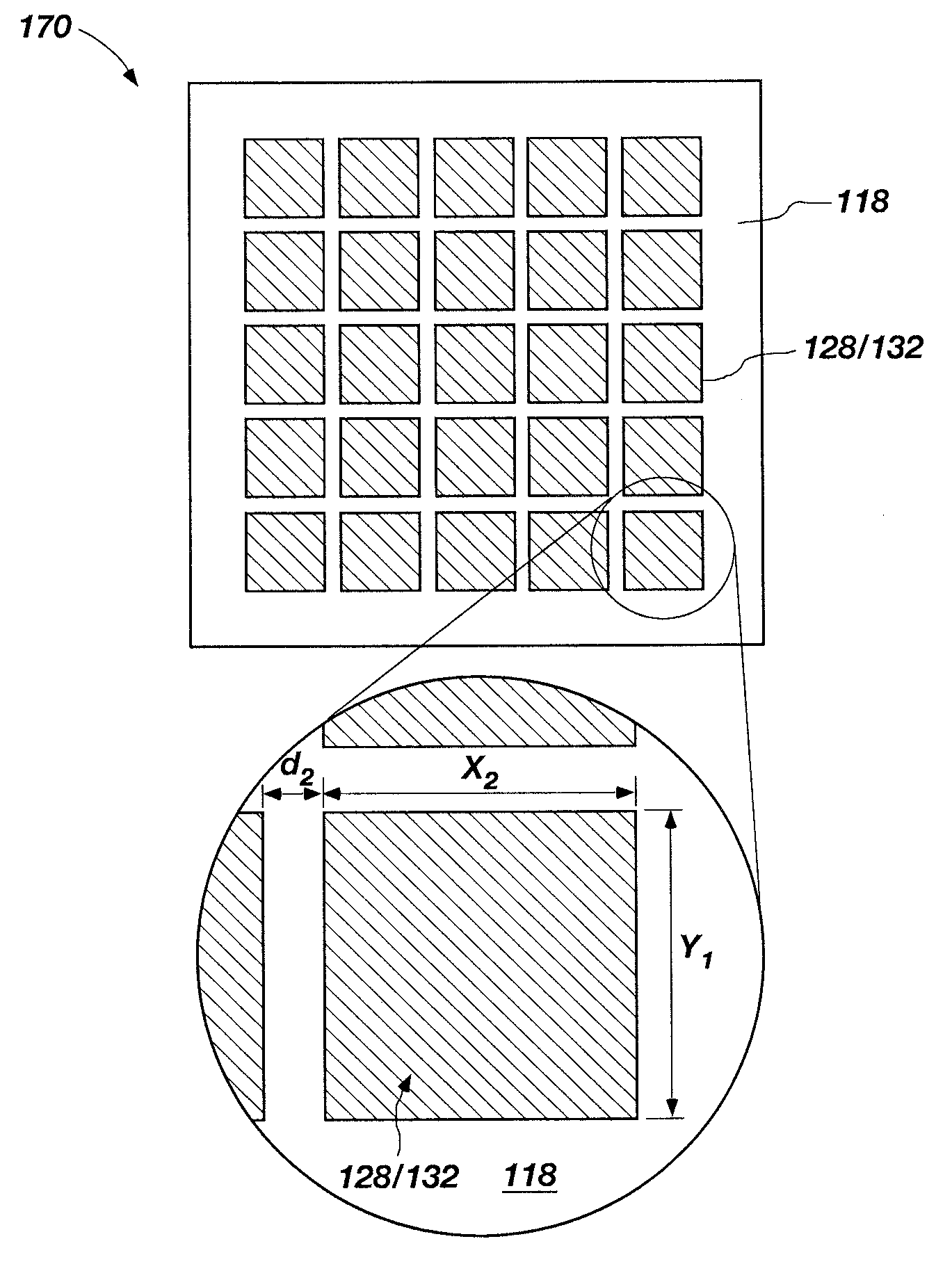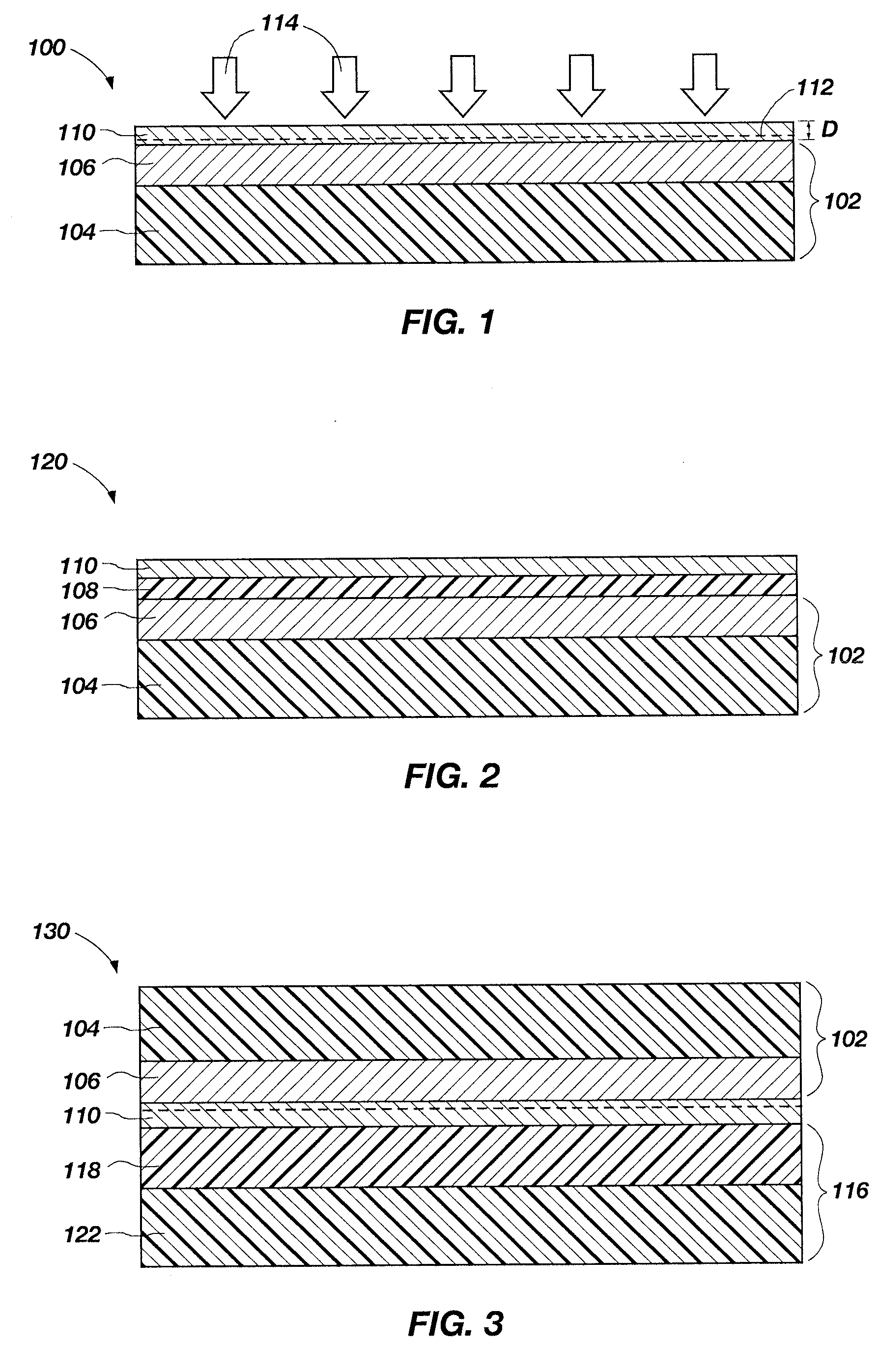Methods of forming relaxed layers of semiconductor materials, semiconductor structures, devices and engineered substrates including same
a technology of relaxed layers and semiconductor materials, applied in the field of fabrication of semiconductor structures or devices, can solve the problems of increasing thickness, difficult formation and use of strained layers of semiconductor materials, and increasing thickness, so as to achieve the effect of reducing the viscosity of the layer of compliant material and substantially reducing the lattice strain of indium gallium nitrid
- Summary
- Abstract
- Description
- Claims
- Application Information
AI Technical Summary
Benefits of technology
Problems solved by technology
Method used
Image
Examples
Embodiment Construction
[0028]The illustrations presented herein are not meant to be actual views of any particular material, apparatus, system, or method, but are merely idealized representations which are employed to describe the present invention. Additionally, elements common between figures may retain the same numerical designation.
[0029]As used herein, the term “III-V type semiconductor material” means and includes any material predominantly comprised of one or more elements from group IIIA of the periodic table (B, Al, Ga, In, and Tl) and one or more elements from group VA of the periodic table (N, P, As, Sb, and Bi).
[0030]As used herein, the term “II-VI type semiconductor material” means and includes any material predominantly comprised of one or more elements from group IIB of the periodic table (Zn, Cd, and Hg) and one or more elements from group VIB of the periodic table (O, S, Se, Te, and Po).
[0031]As used herein, the term “critical thickness,” when used with respect to a material, means maximu...
PUM
| Property | Measurement | Unit |
|---|---|---|
| temperature | aaaaa | aaaaa |
| temperature | aaaaa | aaaaa |
| temperature | aaaaa | aaaaa |
Abstract
Description
Claims
Application Information
 Login to View More
Login to View More - R&D
- Intellectual Property
- Life Sciences
- Materials
- Tech Scout
- Unparalleled Data Quality
- Higher Quality Content
- 60% Fewer Hallucinations
Browse by: Latest US Patents, China's latest patents, Technical Efficacy Thesaurus, Application Domain, Technology Topic, Popular Technical Reports.
© 2025 PatSnap. All rights reserved.Legal|Privacy policy|Modern Slavery Act Transparency Statement|Sitemap|About US| Contact US: help@patsnap.com



